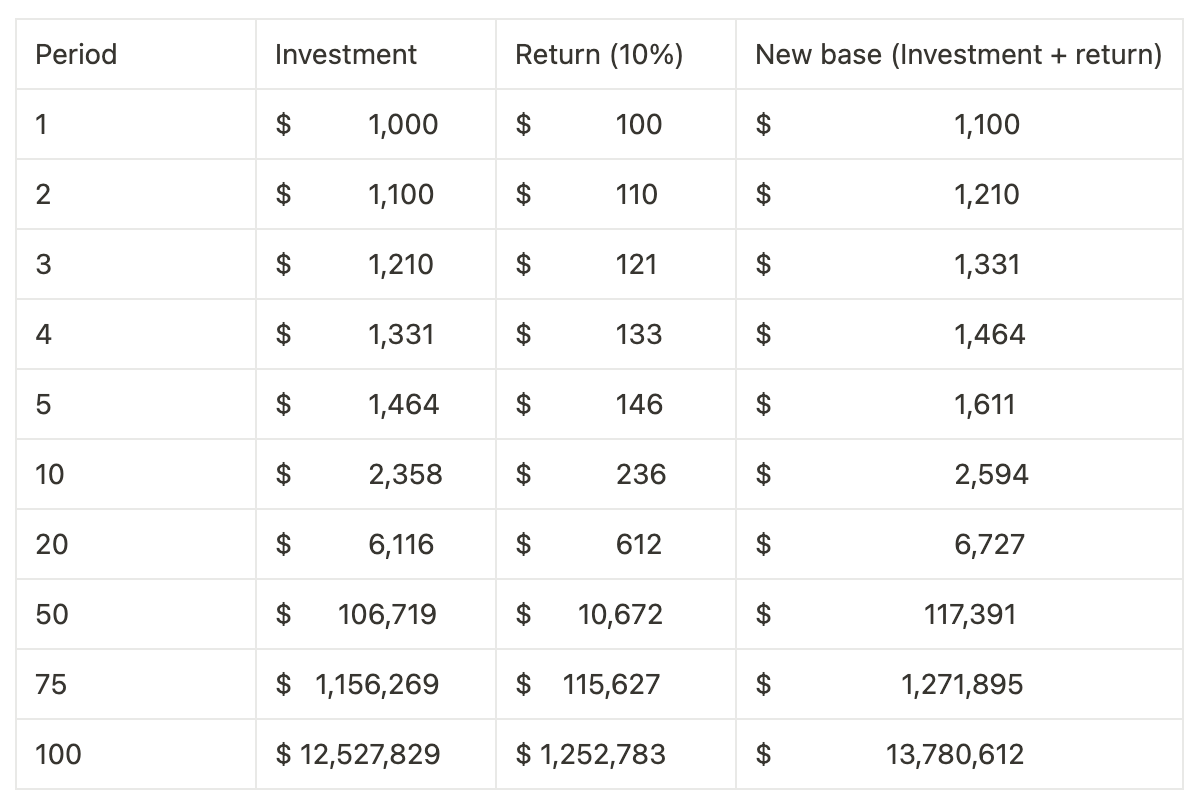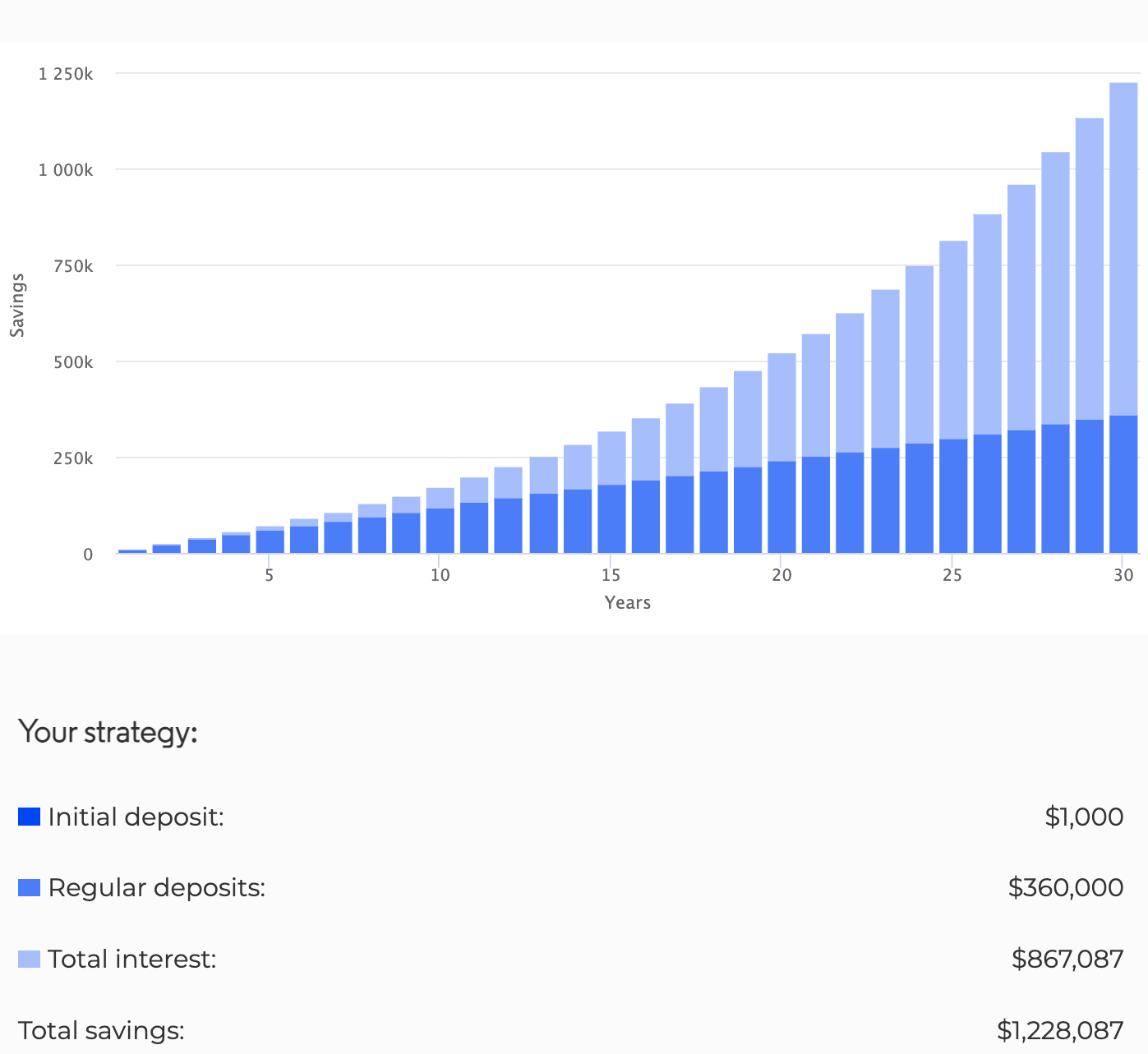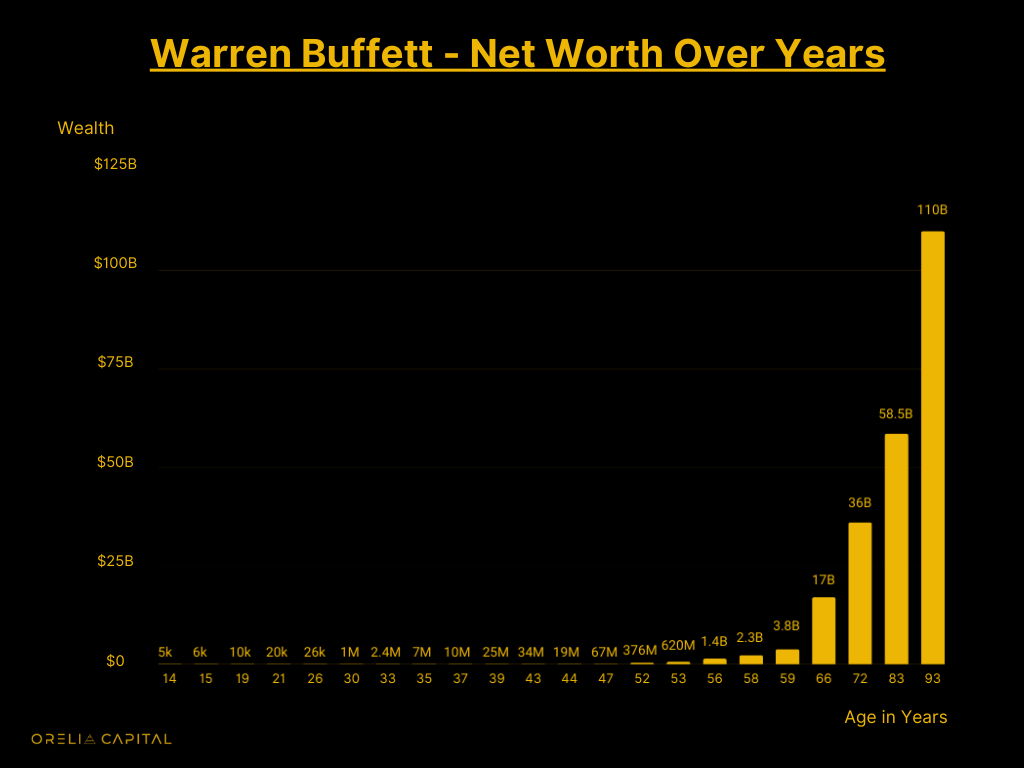The Magic of Compounding - Making Money Work for You

Compound interest is a powerful tool that can help you build wealth over the long term. It is the concept of earning interest on both the principal amount and the accumulated interest, resulting in exponential growth over time. In this article, we will explore the basics of compound interest, how it differs from simple interest, and how you can use it to grow your savings and investments.
Understanding the Basics of Compound Interest: How It Works and Why It Matters
Compound interest is a simple concept with a significant impact. Essentially, it means you earn interest not just on your initial investment but also on the interest accumulated over time. This compounding effect can result in significant growth over the long term.
For example:
- If you invest $1,000 at a 10% return, you will earn $100 in interest in the first period.
- However, if you reinvest that $100 and earn interest on both the original investment and the interest earned, you will earn $110 (10% on $1,000 + 10% on $100) in interest in the second period.
- In the third period, if you reinvest $110 (new return) with the previous investment of $1,100 (old base), you get a return of $121 (10% on $1,100 + 10% on $110) and so on.

And when you plot the new base, i.e. your total return on a graph, you get…

The power of compound interest lies in the fact that it can generate significant wealth over time with relatively little effort. By starting early and investing regularly, you can use this compounding effect to grow your wealth long-term.
The Difference Between Simple Interest and Compound Interest
- Simple interest is the interest earned only on the principal amount, while compound interest is obtained on both the principal and accumulated interest.
- Simple interest is commonly used for short-term loans or investments, such as savings accounts or short-term bonds.
- Compound interest, on the other hand, is typically used for long-term investments, such as retirement savings or investment portfolios.

How to Use Compound Interest to Grow Your Savings and Investments - Strategies
- Start early and Invest (small or large amounts) regularly to take advantage of the compounding effect to significantly grow your savings.
- Choose the Right Investment Vehicle that offers compound interest or compounding returns, such as mutual funds or stocks that pay dividends.
- Reinvest your earnings rather than taking them as cash payouts.
- Let your investments grow, and do not unnecessarily break the chain of compounding by withdrawing from your investments.
- Investing in a tax-advantaged retirement account like 401(k)s and IRAs allows your investments to grow tax-free until retirement.
- Diversifying your investments across different asset classes, such as stocks, bonds, and real estate, to minimize your risk and maximize your returns over the long-term
- Be patient and avoid making impulsive investment decisions based on short-term market fluctuations.
- Consider using a compound interest calculator to see the potential impact of different interest rates and investment strategies.
The Importance of Consistency in Compounding
- Consistency is one of the critical factors in making compound interest work for you.
- Consistency in saving and investing can make a huge difference in your long-term financial goals.
- For example, if you invest $1000 per month at a 7% annual interest rate for 30 years, you will end up with around $1.2 million.

- However, if you skip a few months or don't invest consistently, your end amount will be significantly lower. In this example, there are 360 months in 30 years. Assuming you missed investing every fifth month, you will end up with approximately $985k.In percentage terms, it is a 20% hit to your $1.2 million wealth.
How to ensure consistency?
- One way to ensure consistency is to automate your savings and investment contributions. Many banks and investment firms offer automatic transfer options, which can help you save and invest regularly without thinking about it.
- Additionally, creating a budget can help you identify areas where you can cut back and redirect those funds towards your savings and investment goals.
The Importance of Time in Compounding
In his book “The Psychology of Money”, Morgan Housel conducted an intriguing experiment on Warren Buffett to illustrate the enormous effect time has on building wealth through compounding.
Buffett started investing seriously at the age of 10, and by the time he was 30, his net worth was $1 million or $9.3 million, adjusted for inflation by 2020.
Let’s say he spent money in his teens and 20s like an average person, and by 30, and he saved $25,000 (assumption). And then he went on to generate an extraordinary return of 22% annually and quit investing to retire at the age of 60
What would his net worth be in 2020?
Just around $11.9 million.
That is 99.9% less than his actual net worth in 2020 of $84.5 billion.
Warren Buffett is one of the greatest investors in the world. But his biggest secret is time. Today, Warren Buffett’s net worth is $110 billion at the age of 93 and 99% of his wealth was earned after his 50th birthday.

Does this graph of Buffett’s wealth look familiar? Yes, Warren Buffett is the prime example of compounding wealth in action.
Compound Interest and Debt: How It Can Work Against You
While compound interest can be a powerful tool for building wealth, it can also work against you regarding debt. Many loans and credit cards use compound interest to calculate the interest you owe, which can lead to a cycle of debt that is difficult to escape.
For example, if you have a credit card with a 20% annual interest rate and a $1000 balance and only make the minimum monthly payment, it could take you over 20 years to pay off the balance and cost you over $2000 in interest charges. The interest compounds each month’s unpaid balance, making it harder to pay off the debt.
To avoid falling into this trap:
- Pay off high-interest debt as quickly as possible.
- Consolidate your debts into a single loan with a lower interest rate, making it easier to pay off the debt over time.
- Avoid taking on unnecessary debt in the first place by avoiding high-interest loans and credit cards unless necessary and living within your means to avoid accumulating debt.
By understanding how compound interest works with debt, you can make informed decisions about your finances and avoid falling into a cycle of debt that can be difficult to escape.
Conclusion
In conclusion, understanding compound interest and how to use it to build wealth is essential for achieving long-term financial goals. Starting early, staying consistent, and avoiding common mistakes can make compound interest work for you and create a secure financial future. With the right strategy, anyone can harness the power of compound interest and achieve their financial dreams. Remember, time is the friend of compounding.
Learning Resource Hub

We hope you enjoyed this edition of our newsletter. If you found it helpful, please consider sharing it with others who might benefit from this information.
At Orelia Capital, we believe that feedback is a gift. Your feedback can help us improve our content and provide more value to our readers.
